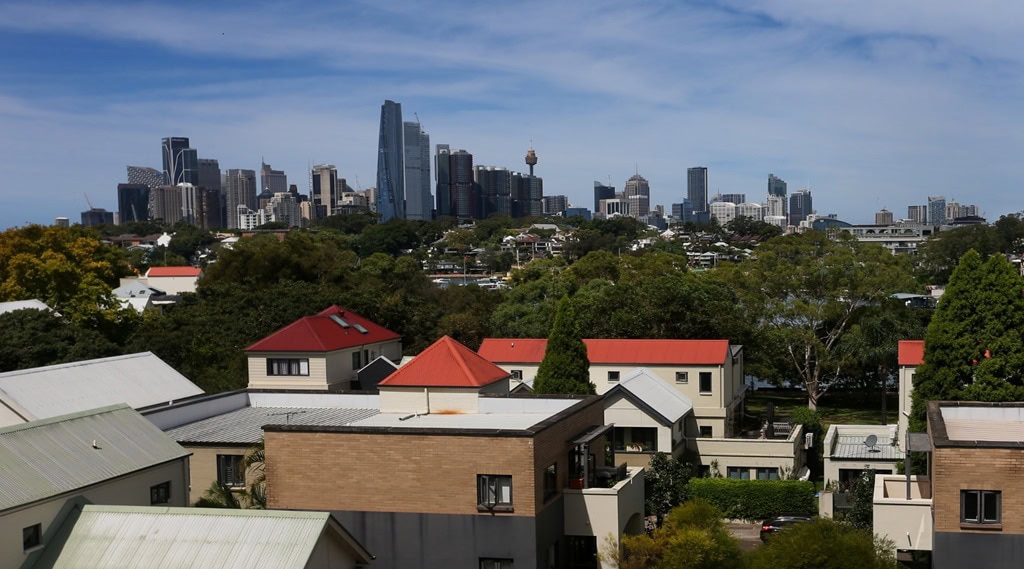Sydney’s Housing Crisis is Eroding Our Productivity

Housing is like a giant octopus reaching into every aspect of our lives, affecting people’s education, wellbeing, career options and productivity.
While the chronic shortage of housing is felt across Australia, it is making life in Sydney increasingly difficult for many people – especially those on low and middle-incomes, and for young people entering the market.
But the high cost of buying and renting property is not just an issue for individuals, couples and families, experts warn that it could undermine Sydney’s long-term economic future and erode our quality of life.
NSW Productivity Commissioner Peter Achterstraat says the high cost of housing in Sydney is putting pressure on household budgets, threatens environmental sustainability and erodes the city’s attractiveness.
“New South Wales is Australia’s most productive, populous and prosperous economy,” he says. “But poor housing affordability – especially in metropolitan areas – limits its economic potential.” *
In a research paper (Building more homes where people want to live) released in May 2023 the commission describes the positive impact of building more high-density housing in established suburbs.
In particular, the commission found that a 10% increase in the city’s housing supply could potentially reduce the overall cost of housing in Sydney by as much as 25%.
Increasing the supply of affordable housing close to where people work would also have a positive impact on people’s mental health, family life and the environment by reducing daily commuting times.
“if we build homes where people want to live, near jobs and amenities, the productivity and lifestyle benefits will be enormous,” said Mr Achterstraat. [1]
“It’s also fairer – key workers like nurses and teachers should be able to afford to live near the hospitals and schools where they work.”
The NSW Government has signed up to the federal government’s National Housing Accord which aims to build an additional 1.2 million homes across the country by 2029 but has already admitted that it will struggle to meet its commitment of delivering 75,000 new homes each year.
Urban Taskforce CEO Tom Forrest says that data from the Department of Planning shows that new housing completions in NSW are still far below what they need to be in order to meet this ambitious five year target.
“Completions over the 12 months till March 2023 in Greater Sydney were only 23,779. This is less than half of what is required if NSW is to reach the National Accord targets,” he said.
“But the current [departmental] forecast for planning approvals and new home completions over the next five years is for NSW to do even worse than the performance that delivered us the crisis we are now in.”
Commissioner Achterstraat agrees that overly complex and sluggish planning systems in NSW are to blame for the chronic shortage of new, affordable homes coming onto the market.
“This is a complex problem with many drivers, but a major one is that our state planning system makes it difficult to build enough new homes where people want to live – close to jobs, transport, schools and other amenities,” he said.
“Instead, the system encourages urban sprawl, forcing people into longer and longer commutes. These policies increase inequality, especially for low- and middle-income workers in Sydney. It shouldn’t be this way, and the good news is it doesn’t have to be.”
The report says delivering a significant number of affordable new homes in Greater Sydney will not only reduce rent and mortgage stress, but also deliver all sorts of benefits for family life and the wider society:
“High housing costs put pressure on household budgets, lower productivity, threaten environmental sustainability and erode the city’s amenity – its attractiveness as a place to live.”[3]
Sydney is often named as one of the most liveable cities on the planet and the productivity commissioner says that building more affordable housing where it is needed is vital if the city to fulfil its potential.
According to the report many of these new dwellings should be high-density housing located near existing transport infrastructure such as train stations – lessening the burden on government coffers.
“Higher-density communities can increase housing supply within the city’s existing footprint and such infill makes the best use of Sydney’s expensive well-located land. In addition, higher residential densities in existing suburbs can take advantage of infrastructure capacity already in place.
“And Sydney has plenty of room to grow upwards. Compared with other leading global cities Sydney has low-density inner suburbs — even the inner areas of Melbourne and Brisbane have considerably higher population density than Sydney’s inner suburbs.”
The paper makes the point that increasing housing density will not undermine Sydney’s celebrated lifestyle, citing Vancouver, Munich and Vienna as three cities with a similar population but higher densities.
“Quality of life does not need to be sacrificed for more density,” it says.
Building more homes where people want to live is the first of three discussion papers being released by the NSW Productivity Commission.
*Melbourne’s population officially overtook that of Sydney in May 2021 when the Victorian capital added several new outer suburbs, including Melton, to the city. Some demographers have challenged the ABS ruling.
Sources:
[1] NSW Productivity Commission
[2] Urban Taskforce